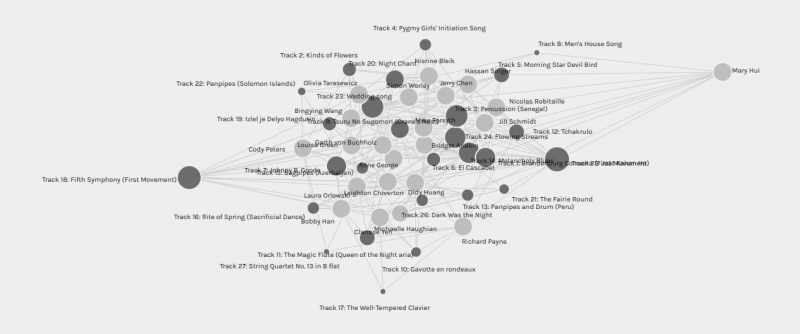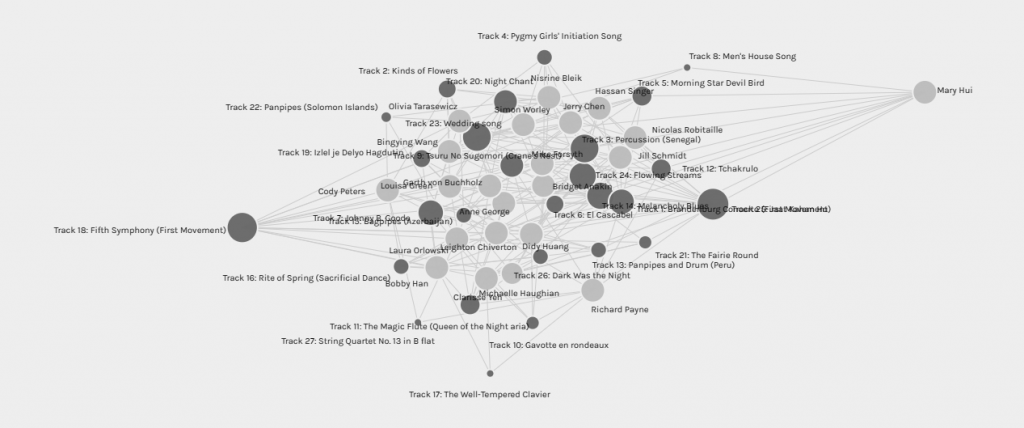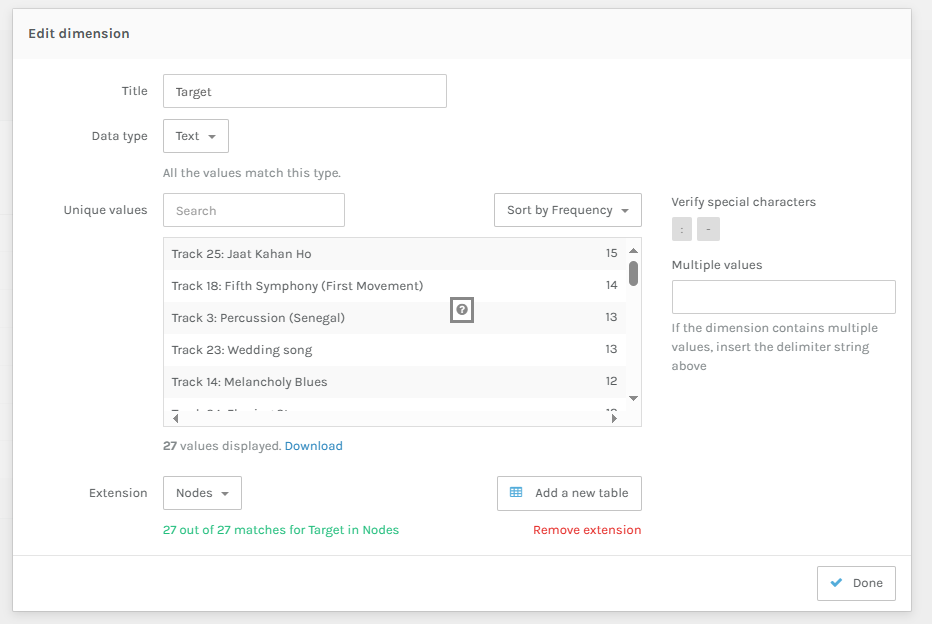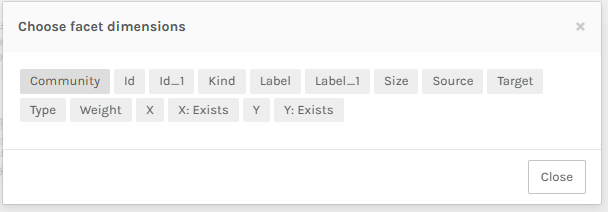Please find my final assignment in Google Docs
Month: November 2023
Task 12: Speculative Futures
StandardThis week, I had a great opportunity to play the game Situation Lab’s Thing from the Future. At first, I didn’t understand what I had to do and was flipping through the cards using the generator. Then I realized, the excel generator combined the cards together and it was less complicated. (oops!) Now I learned something new 🙂
The first scenario generated for me was the following:
“Describe or narrate a scenario about a candy found two generations into a future in which a profound historical evolution has occurred. Your description should address issues related to algorithms and elicit feelings of dread.”
To match the gamification nature of this week’s exercise, I created a short interactive game and tried to connect it to the readings we had this week. Enjoy!
As I create and implement the changes to this game according to this story, it made me think of ChatGPT and how slow I am at creating an artifact compared to them. I enjoyed Dr. Shannon Vallor’s talk immensely and I find that I agree with almost everything she mentioned. One quote that stuck with me was that “AI was still not ready for solo flight” (Vallor, 2018) and it is up to us, as humans as a collective to ensure that it is used for the greater good that can enhance the human race rather than hinder it.
This reminds me of an article I recently read where Bill Gates suggest that “AI could lead to 3-day work week” (Murphy, 2023) because it can help us “cook and stuff”. Now this might scare people into thinking that it is another step to eliminating jobs. As we look around, it is true. Self-check outs are slowly replacing humans cashiers and in countries like Japan, there are stores that are entirely run by robots. However, Microsoft’s co-founder suggests that the “purpose of life is not just to do jobs, AI could provide major benefits to productivity, health care and education” (Murphy, 2023). This can sound optimistic for the average family who wishes to spend more time with their kids. It can potentially eliminate scenarios in Tommy Orange’s story where the child believes that adults “hates children” (Ford, 2020) and adults only puts up with them until they can drop them off at school, escape and focus on work.
This is slowly becoming a reality. 5 years have passed since Dr. Vallor’s talk, and while it is still true that AI is still not at a stage for full autonomy, (i.e.: In Greenspan’s example, there are no self-driving vehicles launched to the public in America yet to prevent potential accidents like the uber self-driving vehicle.) I can see companies such as Microsoft using the data and/or educational material that we publish / hosted on their servers to enhance their AI to create curriculum at record speed. Like Mitrovic, I can “speculate” that AI can “open up all sorts of possibilities that can be discussed, debated, and used to collectively define a preferable future”(Mitrović, 2021) for a new generation of tech savvy learners. Perhaps a new classroom setting where learners can learn wherever and whenever in person or online and the traditional classroom will evolve into something that is entirely new.
Jobs still won’t be eliminated, but we humans will adapt and change our roles in society based on what is built by the elites. Mitrović et al. made a great point about speculative design and instead of being scared of it, we can embrace the future to see how it can be used to enhance human lives.
There are a lot of positive ideas being proposed, but for some reason, there is still a feeling of unease and dread when I look at this. There are a lot of promise from the higher ranking business men and women in society, but will it really enhance people’s lives, or will the thoughts of greed result in AI only benefiting the select few who are privileged enough to experience the rewards?
There’s still a lot of room to explore in the realm of AI and I am not brave enough to see the end result.
References:
Ford, A. C. (Host). (2020, September 2). Tommy Orange: Reopening. [Audio podcast episode]. In The Chronicles of Now. Pushkin Industries.
Santa Clara University. (2018, November 6). Lessons from the AI Mirror Shannon Vallor [Video]. YouTube.
Protected: Task 11: Detain/Release or Text-to-Image
StandardTask 9 : Network Assignment Using Golden Network
StandardThis week’s assignment is quite interesting. Along with my classmates, we were tasked with choosing 10 songs out of 27, and then analyzing the data to see if we can spot any trends / reasons behind why we chose the songs we did.
This is what was generated when I uploaded the data into Palladio.:
I pulled my name out to see if it’s the same size as my classmates, and it seems like it is similar. I guess it is because everyone in class chose 10 songs? Oh I found out 1 person only chose 9 songs… does that skew the data?
The smaller circles are songs that were not chosen as often as the bigger / darker circles. At this point, I have no idea why people chose the songs they did, but I know which songs are more popular than the other. To be fair, I went into some of the blogs to find out why people chose their songs. Some of them simply like the beat of the music / songs. Others chose the songs because they like the instrumental range it included. I did find some of my colleagues disliked some of the songs. However, even when I toggle the filter, it was difficult to determine the rationale of the decisions based on this visualization alone.
So I went to Edit dimensions to see and sort by frequency. Seems like Track 25 is the most frequently picked and track 17 and 27 was the least picked.
I went back to Youtube to play the songs again just to see if I can find a common trend. I still cannot find out why, so I then came back to Palladio. Then I found out who picked which song by playing around with the settings, and played with the calculator function inside Palladio.
Yet, I was still confused as the labels were not descriptive. For example, I have no idea why I was filtering what I was filtering. I can choose the source and target. Depending on what I choose, the visualization changes. This is an interesting view, but what do the numbers mean? I don’t really understand what is being displayed here.
Another reason for the confusion is that I don’t understand what the dimensions are. The program asks me to choose a dimension, but what do they mean? It seems like Label_1 consist of all the tracks, and community consist of the number of students. Source is who picked what… X/Y related ones are how the the nodes are plotted, so it doesn’t really help me find out why people chose the songs they did. Perhaps if there was facet with categories for reason and students were able to select why they chose the songs, that may be more helpful.
i.e.: Reason: Genre, upbeat, liked the song, disliked the song, etc.
At this point, it seems like the data displays quantitative results rather than qualitative even though the plots are visualized, it does not provide any rationale to why people chose the songs they did without going to each blog to see task 8. This defeats the point having a centralized statistical data hub to depict the reason for why people chose the songs they did.
Task 8: Golden Record Curation Assignment
StandardIf I were to weave my own story and select 10 songs from the Nasa’s Golden Record list, it would probably look like this:
14. Melancholy Blues – The type of music and how it is recorded provides a glimpse to the audience that life haven’t always been this advanced, and humans evolved from recording songs using limited to very advanced technology. It also speaks to the history itself… it hasn’t always been happy.
21. Fairie Round – While history haven’t always been great and humans make a lot of selfish decisions that impacts evolution, there are also good times and those moments should be celebrated.
24. Flowing Streams – Speaks to the many innovations that sparked from this country. The paper for example was made by using streams of water and pulp from bamboo and wood. innovation does not have to be loud, but it can impact the world in a great way.
- Brandenburg Concerto (First Movement) – I adore classical music and many of which originated from / inspired by European countries. This also includes a variety of string instruments that follows the same sheet music, which is quite unique.
3: Percussion (Senegal) – On the opposite end, this one includes percussions that follows along with the same sheet music to create music that people are able to get up and dance to!
8: Men’s House Song – I wish to include this as controversial as the title may be, but the world is still a men’s world. While there is an effort to strive for equality in all senses, there is still a lot of room to explore.
23: Wedding song – While this song is about a woman not wanting to get married, there are still a lot of people wanting to find true love. In the past, marriage may be created as a trade / monetary reasons, this technology has now evolved into something very different. People can choose their partners and choose to stay with them forever because of love. This song shows that marriage is evolving and men and women can learn to depend on each other for more than just financial reasons.
5: Morning Star & Devil Bird – Again, not everything is positive in this world. Just wanted to show a contrast to the happy times, there are still wars ongoing. What seems to be the truth on 1 end… may not be in the other side.
12: Tchakrulo – Going back to the point where people depend on each other. I chose a song sang by the choir to illustrate the point that together as a species we can still make beautiful music if given the chance.
Track 13: Panpipes and Drum (Peru) – Chose this song because it has the style as the first song, but it is heavier on the percussion side. It represents that we can somehow made our own history with our current technology, and whoever is listening to this track, hopefully they will be able to listen to what is here and build upon / innovate to this list of music.






